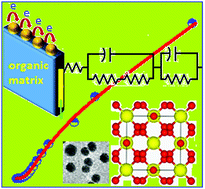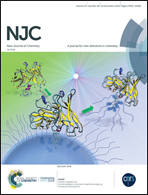Laboratory based synthesis of the pure form of gananite (BiF3) nanoparticles: a potential material for electrochemical supercapacitor application†
Abstract
Gananite is a rare bismuth based mineral with a general formula of bismuth trifluoride (BiF3). In this manuscript, a facile laboratory based wet-chemical method has been reported for the synthesis of organic molecule stabilized BiF3 nanoparticles for the electrochemical supercapacitor application. The X-ray diffraction pattern indicates the crystalline nature of the BiF3 nanoparticles with the pure form of the face centered cubic crystal structure. At current densities of 2 and 70 A g−1, the material exhibited specific capacitances of 1127 and 400 F g−1, respectively, in the presence of 10 wt% of carbon black as a dopant, within a potential range from −1.0 to 0.0 V. Under the above mentioned conditions the capacitor also showed superior energy and power density values (313 and 112 W h kg−1 at 1.9 and 70 kW kg−1, respectively). The BiF3 based device displays high cycling stability and retains 96% of its initial specific capacitance after 103 uninterrupted charge–discharge cycles at a current density of 10 A g−1.



 Please wait while we load your content...
Please wait while we load your content...